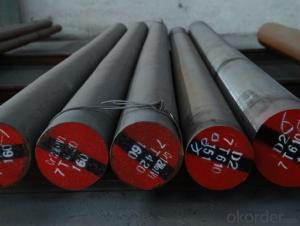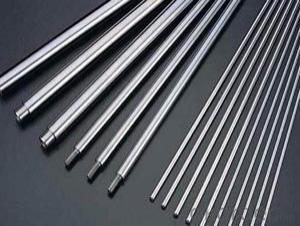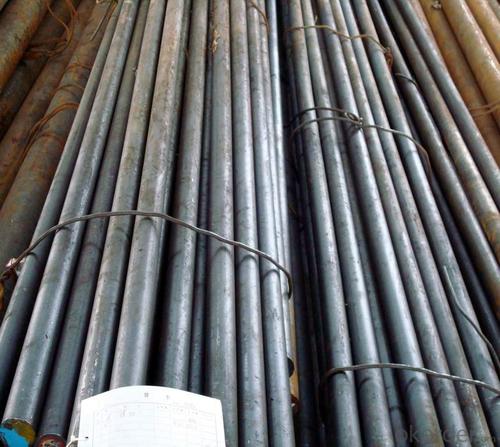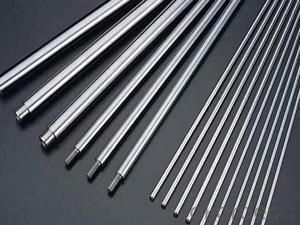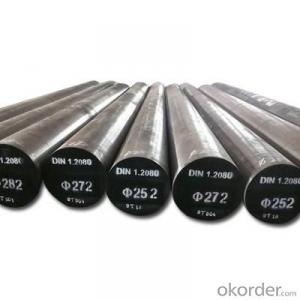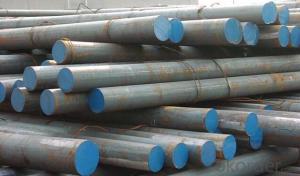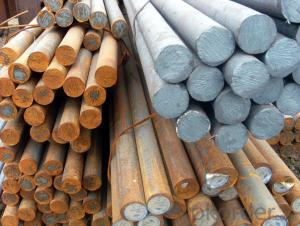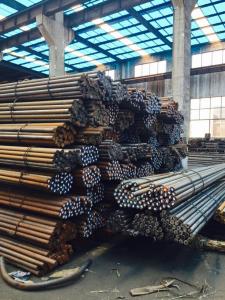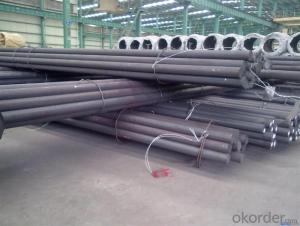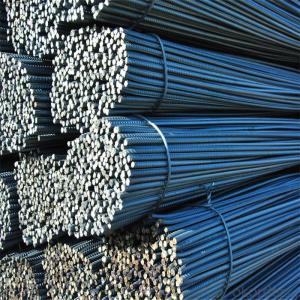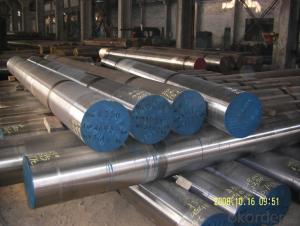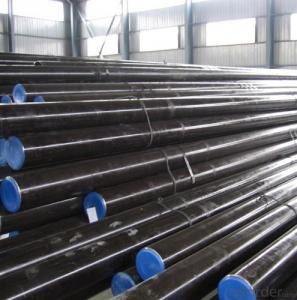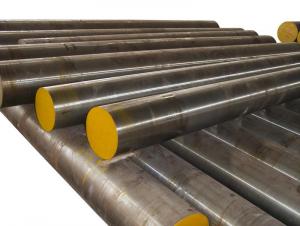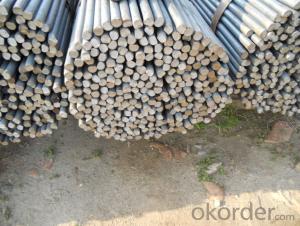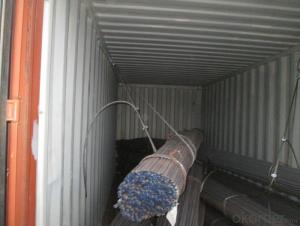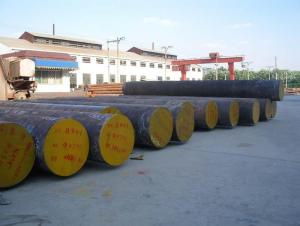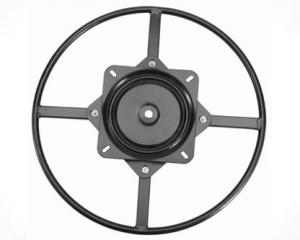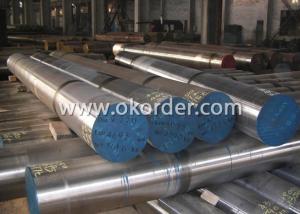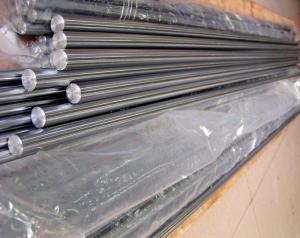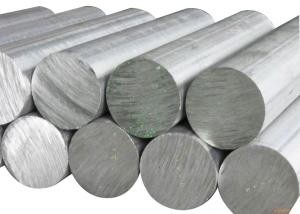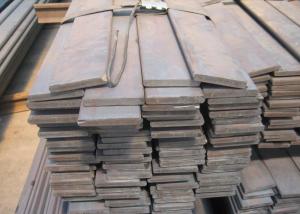High Quality Hot rolled Special Bearing Steel Bar
- Loading Port:
- Shanghai
- Payment Terms:
- TT or LC
- Min Order Qty:
- 20 m.t.
- Supply Capability:
- 500 m.t./month
OKorder Service Pledge
OKorder Financial Service
You Might Also Like
Product Description:
OKorder is offering Hot rolled Bearing Special Steel Bar at great prices with worldwide shipping. Our supplier is a world-class manufacturer of steel, with our products utilized the world over. OKorder annually supplies products to European, North American and Asian markets. We provide quotations within 24 hours of receiving an inquiry and guarantee competitive prices.
Product Applications:
Our products have been used in all kinds of areas, such as aviation, aerospace, navigation, nuclear, energy, chemical industry, electronic information, petrochemical, automotive, instrument and meter, Communication ,transportation, and medical instruments, etc. Bearing ring,steel rolling mill ,machinery, 100Cr6 bearing steel ball is widely used in high-speed and low-noise bearing, bicycle, motorcycle, automobile, bags, electronics.
Product Advantages:
OKorder's Hot rolled Bearing Special Steel Bar are durable, strong, and resist corrosion.
Main Product Features:
· Premium quality
· Prompt delivery & seaworthy packing (30 days after receiving deposit)
· Corrosion resistance
· Can be recycled and reused
· Mill test certification
· Professional Service
· Competitive pricing
Product Specifications:
Specifications of Bearing Steel
1. Dimensional sizes: Thickness: 14~100mm.Length:3000~5800mm,Diameter :14-500mm
2.Chemical composition:
C | Si | Mn | Cr | Ni | Cu |
Equal or less than | |||||
0.95-1.05 | 0.15-0.35 | 0.20-0.40 | Cr:1.30-1.65 | 0.30 | 0.25 |
3. Grade: SAE51200/ GCr15 / 100cr6
4. Heat Treatment:
Soft annealing: heat to 680-720°C, cool slowly.
Hardness after annealing: Max. 241 HB
Hardening: 820 - 850 °C
Normalizing temperature: 840-880°C
Tempering: 540-680°C
5. Surface requirements: Black, grinding, bright, polish
6. Characters:
1) Comprehensive properties
2) Good performance in cutting and processing after spheroids annealing
3) High hardness and homogenization after quenching and tempering
4) High abrasive resistance and fatigue resistance
7. Payment terms: T/T or L/C at sight
Packaging & Delivery of Bearing Steel
Mark: Heat No. will be cold stamped and Steel grade, diameter (mm), length (mm), and the manufacturer LOGO and weight (kg) is painted.
Standard seaworthy packing or as customer required
Delivery time: Within 30 days after order is confirmed.

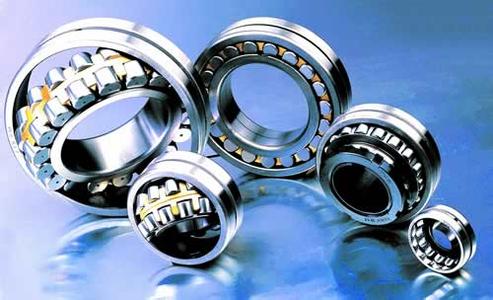
Note:
1. According to national standard (GB) for our products, if not, supply according to national standards (GB) or agreement.
2. We can not only provide electric furnace +LF+VD and electro-slag re-melting (ESR)steel forging materials, but also forging products of piece, bar, etc.
3. Our company is equipped with roll equipment and can provide our customers with roll billets or finished.
4. Please send us your detailed specifications when inquire. We will reply to you ASAP.
FAQ:
Q1: Why buy Materials & Equipment from OKorder.com?
A1: All products offered byOKorder.com are carefully selected from China's most reliable manufacturing enterprises. Through its ISO certifications, OKorder.com adheres to the highest standards and a commitment to supply chain safety and customer satisfaction.
Q2: How do we guarantee the quality of our products?
A2: We have established an advanced quality management system which conducts strict quality tests at every step, from raw materials to the final product. At the same time, we provide extensive follow-up service assurances as required.
Q3: How soon can we receive the product after purchase?
A3: Within three days of placing an order, we will begin production. The specific shipping date is dependent upon international and government factors, but is typically 7 to 10 workdays.
- Q: What are the different cutting tools used for special steel?
- There are several different cutting tools that are commonly used for special steel applications. These tools are specifically designed to handle the unique properties and characteristics of special steel, which often requires more precise and specialized cutting techniques. Some of the most commonly used cutting tools for special steel include: 1. Carbide tipped saw blades: These saw blades have carbide teeth, which are extremely hard and durable. They can cut through special steel with ease, providing clean and accurate cuts. 2. High-speed steel (HSS) cutting tools: HSS cutting tools are made from a type of tool steel that can withstand high temperatures and maintain their hardness. These tools are commonly used for drilling, milling, and turning operations on special steel. 3. Diamond cutting tools: Diamond is one of the hardest materials known to man, making it ideal for cutting through tough materials like special steel. Diamond cutting tools, such as diamond-coated saw blades or grinding wheels, are commonly used in special steel applications. 4. Waterjet cutting machines: Waterjet cutting machines use a high-pressure stream of water mixed with abrasive particles to cut through special steel. This method is particularly suitable for complex shapes and intricate designs. 5. Plasma cutting machines: Plasma cutting machines use a high-velocity jet of ionized gas to cut through special steel. This method is often used for cutting thick sections of special steel quickly and efficiently. 6. Laser cutting machines: Laser cutting machines use a highly focused laser beam to cut through special steel. This method offers high precision and can be used to cut complex shapes and patterns. It is important to choose the appropriate cutting tool based on the specific requirements of the special steel being worked with, as well as the desired cutting method and application. Consulting with a specialist or referring to the manufacturer's recommendations can help ensure the best cutting tool is selected for the job.
- Q: What are the different types of alloy steel?
- There are several different types of alloy steel, including stainless steel, tool steel, high-strength low-alloy steel, and maraging steel. Each type has its own unique composition and properties, making them suitable for various applications in industries such as construction, automotive, and aerospace.
- Q: What are the properties of maraging steel?
- Maraging steel is a type of high-strength steel known for its exceptional toughness, strength, and resistance to wear and fatigue. It possesses unique properties such as high yield strength, excellent impact resistance, and good corrosion resistance. Additionally, maraging steel exhibits good machinability, allowing it to be easily shaped and formed. This steel also has the ability to be heat treated to achieve even higher levels of strength, making it highly desirable for applications in aerospace, defense, and tooling industries.
- Q: What are the different methods of surface carburizing for special steel?
- Surface carburizing is a heat treatment process used to increase the carbon content at the surface of steel, resulting in a hardened outer layer. There are several methods of surface carburizing for special steel, each with its own advantages and disadvantages. 1. Gas Carburizing: This method involves exposing the steel to a carbon-rich gas, such as methane or propane, at elevated temperatures. The gas reacts with the steel surface, depositing carbon and forming a hardened layer. Gas carburizing is a widely used method due to its versatility, controllability, and ability to produce uniform and deep case depths. However, it requires specialized equipment and longer processing times. 2. Pack Carburizing: In this method, the steel is packed in a container with a carbon-rich material, such as charcoal or carbon powder. The container is then heated to high temperatures, allowing carbon to diffuse into the steel surface. Pack carburizing is a cost-effective method, but it is relatively slower and less controllable compared to gas carburizing. 3. Liquid Carburizing: Also known as cyaniding, this method involves immersing the steel in a liquid bath containing a carbon-rich compound, such as sodium cyanide. The bath is heated to high temperatures, which enables carbon diffusion into the surface of the steel. Liquid carburizing is a fast and cost-effective method, but it requires careful handling of toxic chemicals and may result in lower case depths compared to other methods. 4. Plasma Carburizing: This method utilizes a plasma discharge to provide a carbon-rich atmosphere around the steel surface. The plasma contains hydrocarbons, which dissociate into carbon atoms that diffuse into the steel. Plasma carburizing offers precise control over case depth and can achieve high surface hardness. However, it requires specialized equipment and is generally more expensive than other methods. 5. Salt Bath Carburizing: In this method, the steel is immersed in a molten salt bath containing carbon-rich compounds. The salt bath is heated to high temperatures, allowing carbon to diffuse into the steel surface. Salt bath carburizing is a versatile method that can achieve high case depths and excellent surface hardness. However, it requires careful temperature control and can be challenging to remove the salt residues after the process. It is important to select the appropriate method of surface carburizing based on the specific requirements of the special steel, such as desired case depth, hardness, and cost considerations.
- Q: What are the properties of high-temperature alloy steel?
- High-temperature alloy steel possesses properties such as excellent heat resistance, high strength, good oxidation and corrosion resistance, and the ability to maintain mechanical properties at elevated temperatures. It is also known for its resistance to thermal fatigue, creep, and thermal shock, making it suitable for applications in high-temperature environments.
- Q: What are the requirements for special steel used in battery technology?
- Special steel used in battery technology must meet several requirements to ensure optimal performance and safety. Firstly, high corrosion resistance is crucial as batteries often contain corrosive electrolytes that can degrade the steel over time. Special steel should possess excellent resistance to corrosion, preventing any chemical reactions that could compromise the battery's integrity and lifespan. Secondly, good mechanical strength is essential to withstand the internal pressures and external forces that batteries are subjected to during operation and handling. It must be able to resist deformation and maintain its structural integrity, even under high stress conditions. Thirdly, high thermal conductivity is desirable in special steel used in battery technology. Efficient heat dissipation is crucial for preventing overheating, which can reduce battery performance and potentially lead to safety hazards. Steel with good thermal conductivity allows for effective heat transfer, ensuring that the battery can operate within safe temperature limits. Additionally, the steel should have low electrical resistivity to minimize energy losses due to electrical resistance. This ensures efficient energy transfer within the battery and reduces power dissipation, increasing overall battery efficiency. Furthermore, special steel used in battery technology should be compatible with the other materials used in the battery, such as electrodes, electrolytes, and separators. Compatibility is crucial to prevent any chemical reactions or detrimental interactions that could compromise the battery's performance or lifespan. Finally, environmental sustainability is increasingly important in modern battery technology. Special steel used in batteries should be produced using environmentally friendly methods, with minimized carbon footprint and reduced use of scarce resources. Overall, special steel for battery technology should possess high corrosion resistance, mechanical strength, thermal conductivity, low electrical resistivity, compatibility with other battery materials, and environmental sustainability to ensure optimal performance and safety in batteries.
- Q: What are the properties of weathering steel?
- Weathering steel, also known as corten steel, possesses several distinctive properties. It exhibits high resistance to corrosion, making it suitable for outdoor structures without the need for protective coatings. Its unique composition allows for the formation of a stable rust-like appearance, providing an aesthetically pleasing and natural finish. Moreover, weathering steel has excellent strength and durability, making it ideal for various applications, including bridges, buildings, and architectural elements.
- Q: What are the different tooling grades of special steel?
- There are various tooling grades of special steel, each designed to fulfill specific requirements and applications. Some common tooling grades include high-speed steel (HSS), which is known for its excellent heat resistance and durability; carbide steel, which is extremely hard and suitable for cutting tools; and stainless steel, which offers corrosion resistance and is commonly used for precision tools. Other tooling grades may include alloy steel, tool steel, and die steel, among others, each tailored to different tooling needs.
- Q: What are the different surface treatments applied to special steel?
- Enhancing the properties and improving the performance of special steel can be achieved through the application of different surface treatments. Commonly used treatments include: 1. Utilizing heat treatment involves subjecting the steel to specific temperatures and controlling the cooling process. This treatment enhances the steel's hardness, strength, toughness, wear resistance, and corrosion resistance. 2. Coating the surface of special steel with a protective layer is another frequently used surface treatment. Electroplating, hot-dip galvanizing, and powder coating are some methods employed. Coatings provide added corrosion resistance, enhance the appearance of the steel, and prolong its lifespan. 3. Nitriding is a process that diffuses nitrogen into the steel's surface at high temperatures. This forms a tough outer layer, improving wear resistance and fatigue strength while maintaining core toughness. 4. Shot peening is a mechanical treatment that involves bombarding the steel surface with small spherical particles made of steel or ceramic. This induces compressive stresses in the surface layer, improving fatigue strength and resistance to stress corrosion cracking. 5. Passivation is a chemical treatment used to eliminate impurities and contaminants from the steel's surface, typically by immersing it in an acid solution. This process restores the natural corrosion resistance of stainless steel by forming a protective oxide layer. 6. Electro-polishing is an electrochemical process that removes a thin layer of material from the steel's surface. It improves surface finish, eliminates micro-roughness, and enhances corrosion resistance. These are just a few examples of the various surface treatments applicable to special steel. The choice of treatment depends on the specific requirements of the application and the desired properties of the steel.
- Q: How does special steel resist wear and tear?
- Special steel resists wear and tear due to its unique composition and manufacturing process. It is made with a higher percentage of alloying elements such as chromium, nickel, and molybdenum, which enhance its hardness, strength, and corrosion resistance. This increased hardness enables the steel to withstand abrasion, friction, and impact, making it highly durable and resistant to wear and tear. Additionally, special steel undergoes specialized heat treatments and mechanical processes that further enhance its toughness and resistance to deformation, contributing to its ability to withstand harsh and demanding conditions without significant deterioration.
Send your message to us
High Quality Hot rolled Special Bearing Steel Bar
- Loading Port:
- Shanghai
- Payment Terms:
- TT or LC
- Min Order Qty:
- 20 m.t.
- Supply Capability:
- 500 m.t./month
OKorder Service Pledge
OKorder Financial Service
Similar products
Hot products
Hot Searches
Related keywords

